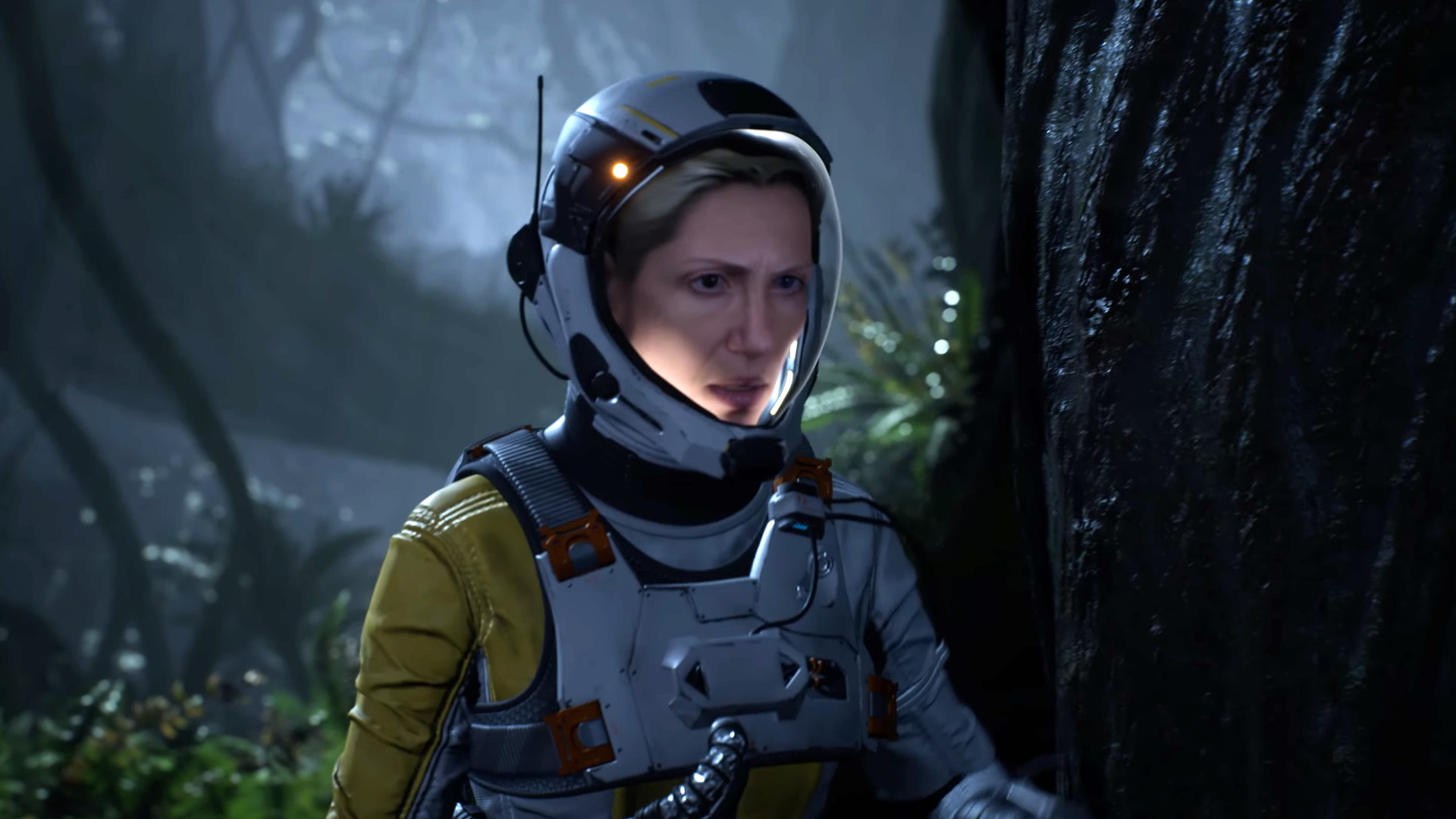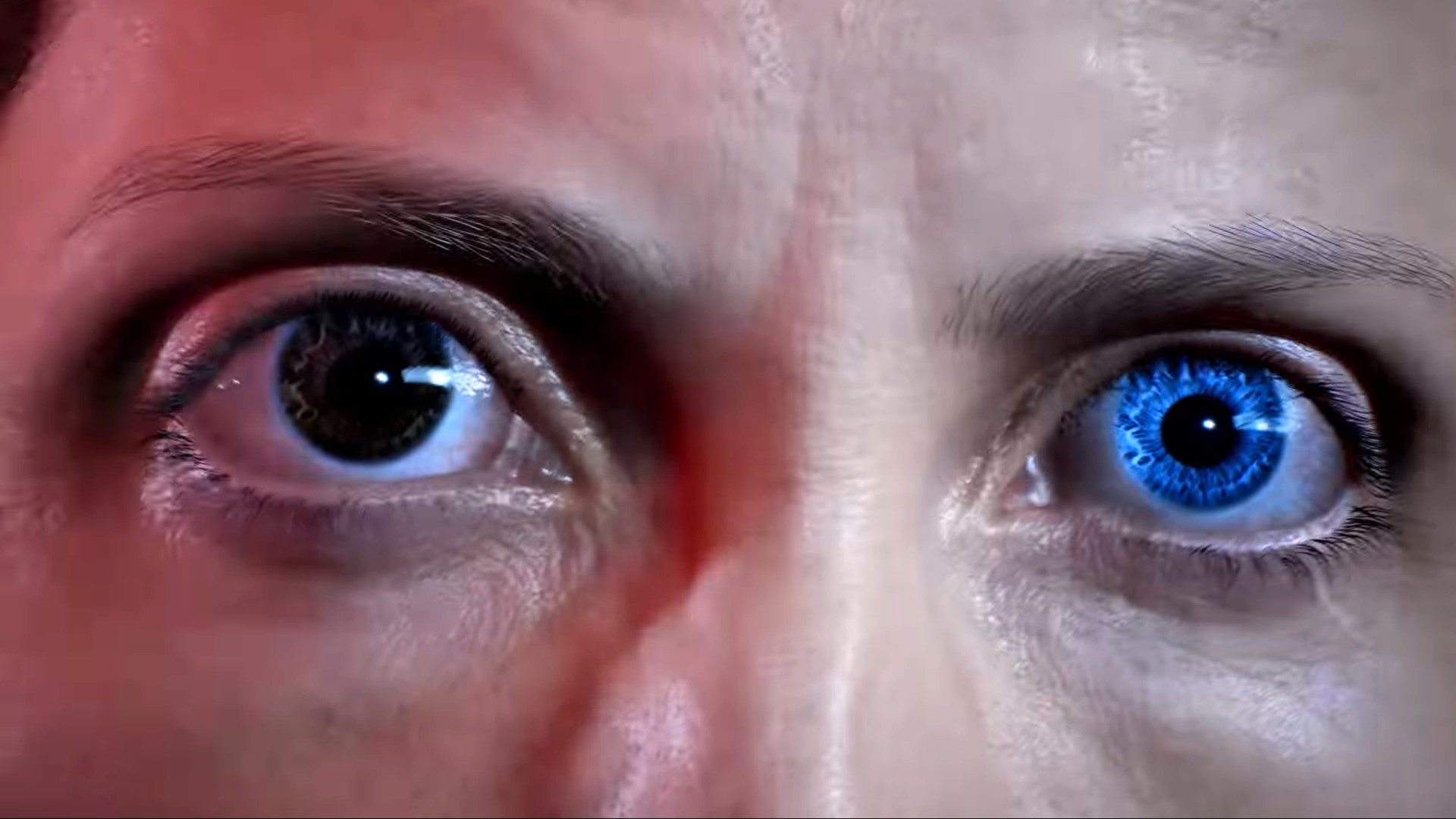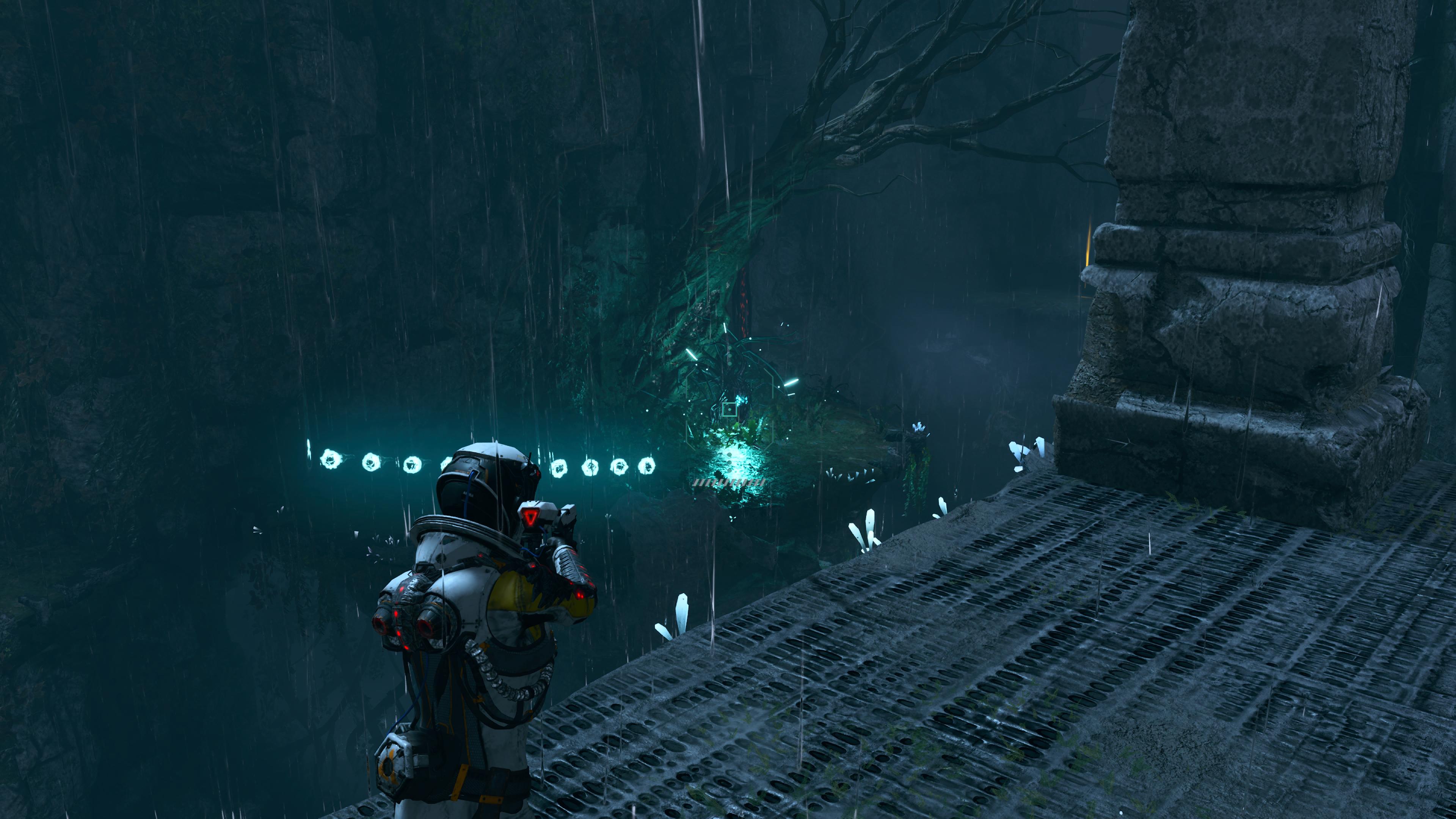
Returnal’s ending isn’t easy to find. Once you hit the credits of the game for the first time, you might think that you’ve got to the end of the game’s story, but there’s plenty more to discover. After all, Returnal is a roguelike, and you explore the game by dying and seeing what it’ll spawn in next time. It makes sense that it’s deepest secrets take more than one successful run to uncover.
That does mean finding its true end can be complicated, especially if you don’t know what to look for. This is where this article comes in, giving you the full story of Returnal’s real ending, as well as some thoughts on why Housemarque’s story is perhaps more subversive than you initially thought. It should go without saying that there are plenty of spoilers ahead, and the assumption you’ve reached the end of Act 2 in Returnal.
Returnal ending explained

Once you’ve completed Act 2, and you watch a cutscene where Selene crashes a car with her child in it into a river, you’ll reawaken in the Overgrowth Ruins, the game’s fourth world. Selene will now start talking about having to put the Sun back together, and this means collecting a fragment of the Sun Face from Selene’s house across all 6 biomes in the game. You’ll now be able to return to the Act 1 world, as a mysterious machine is revealed in your ship, Helios, that lets you move between the two sets of biomes.
Once you’ve collected all 6 Sun Face fragments, Selene will be able to enter her 20th century house one last time. A short segment follows, which sees her finally able to access the basement, where she finds a wheelchair and sits down in it, aging rapidly. When she wakes back up, she is sitting on a throne, next to two decomposing Severed aliens, while her house is gone. She will also now have a set of car keys, which have an astronaut keyring on them.

From here, you’ll need to defeat the game’s final boss, Ophion, one final time. Once you’ve taken out the underwater menace, you’ll be able to descend once again into the game’s final pit. This time though, you can open Selene’s car, and get to the game’s final cutscene. Here, we see Selene confront a seemingly pregnant creature who is in the same wheelchair Selene sat in. She goes to embrace Selene, who shoves her to the floor. This creature then points to the stars, which Selene looks at, before she looks at her hands, which now have the astronaut’s gloves on. As Selene looks back, she is on the bridge where she crashed in the Act 2 ending, with the car swerving to miss her, but crashing over the bridge. As the game cuts to the credits, we hear Selene whisper: “Helios”.
In one final moment to hammer home the story’s point, Selene wakes up again in the Overgrown Ruins, to find a new Scout Log waiting for her. In it, she tells herself: “I cannot atone, so I accept. When I laid on the side of the road dying, I understood the truth: this is my home. The sense of belonging I was searching for… is here. This is my place in the stars. I will stay here now. As you will.”
Don’t fear the reaper

The simple explanation is that all of Returnal is taking place in Selene’s head. The White Shadow signal she’s been chasing? That was simply the light above the water’s surface which her car crashed into. Her ship Helios being beyond repair? The guilt of her not being able to rescue her child from the depths of the river. The Xenoglyphs referring to a Creator/Destroyer throughout the game? Selene’s crash is implied to have killed her child, making her both.
While this is a pretty familiar trope, one that Jacob’s Ladder fans might have seen coming, what makes Returnal’s ending work is the fact that it subverts modern gaming storytelling convention. We’re used to seeing new stories being written with an eye for the future, a franchise in the making, rather than a tale for the present. Returnal, especially in its early stages, seems like it’s setting up for something similar. The world of Atropos is not only teaming with murderous creatures and alien environments, but lore-heavy backstory that can be found on Xenoglyphs and Scout Logs. The story might feel basic, as Selene tries to chase down the White Shadow signal that drew her to this planet, but the world-building feels suitably dense.

As the game moves on though, Housemarque gives players just enough information to realise that things aren’t as they appear. The ships’ records change between the first and second set of biomes, becoming more unsettling and starting to reference Greek mythology extensively. Once they make that connection explicit, it’s hard not to dig into just how many Greek myths are actually hat-tipped throughout.
Selene is the name of the goddess of the Moon, while Helios is the Sun God. The company Selene imagines she flies for is called Astra, which is latin for Star. The bosses – Phrike, Ixion, Nemesis, Hyperion, and Ophion – all have a basis in Greek mythology as well. It gives the impression that we’re seeing something significant play out, even if the sci-fi setting is a red herring.
Weekly digests, tales from the communities you love, and more
Returnal of the Dead

But no, Returnal’s horror lies in its simple and effective denouement. Selene’s psyche has created a world for her to live in for the last moments of her life. She has seemingly killed her child, managed to escape the water she crashed in, and now stares at the stars, her life seemingly flashing before her eyes. Games, especially blockbusters like this, don’t usually end on such a fatalistic note. The subversion comes from what the game assumes people will want from it; that the cycle can be broken and the world will have a deeper meaning.
Instead, the gut-punch ending offers just enough to allow us to process the story without feeling short-changed. Returnal hides its secrets in plain sight, and yet years of blockbuster storytelling in games mean we expect something grander to materialize, with threads left dangling for a sequel. By producing such a devastating denomuent, Returnal realizes its horror by leaving you trapped in Selene’s nightmare, searching for higher meaning even once you dig up the buried truth.

Ben Tyrer is a freelance games journalist with over ten years experience of writing about games. After graduating from Bournemouth University with a degree in multimedia journalism he's worked for Official PlayStation Magazine as a staff writer and games editor, as well as GamesRadar+ (hey, that's this website!) as a news editor. He's also contributed to Official Xbox Magazine, Edge, PC Gamer, GamesMaster, PC Games N, and more. His game of the year - no matter the year - is Rocket League.


